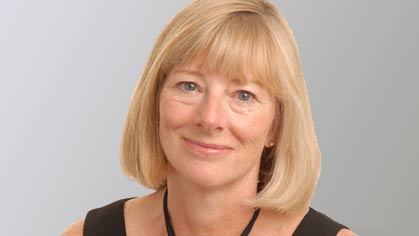
Published 30th Nov 2020
Angela Oakes, Co-founder and Joint President GWPR (Global Women in PR)
Last week GWPR was given the opportunity to speak at the ICCO Global Summit. The organisers were keen for speakers to ‘focus on new, emerging and unresolved issues, to challenge PR leaders and revaluate the industry as we know it’.
At Global Women in PR we immediately knew the burning and unresolved issue we wanted to address: Breaking Down Boardroom Barriers– as 64% of seats at the boardroom table are taken by men; despite the global PR industry being 2/3 female.
There’s currently a lot of discussion about diversity and inclusion in the PR industry, with a particular focus on the under-representation of the BAME communities. And whilst this is certainly an important issue, addressing gender diversity in the boardroom is equally important.
According to management consultancy McKinsey & Co. there is a direct link between boardroom diversity and a company’s financial performance. Company profits and share performance can be close to 50 percent higher when women are well represented at the top.
Senior-level women also have a vast and meaningful impact on a company’s culture. They are more likely than senior-level men to embrace employee-friendly policies and programmes and to champion racial and gender diversity. They are also more likely to mentor and sponsor other women.
The timing of the Summit was perfect as it meant we could bring in the top line findings of the GWPR Annual Index 2020– our research-based report conducted by leading market research agency Opinium – tracking the progress of women working in the global PR industry.
We also had some interesting research from a survey of our GWPR members this Summer, where we sought to identify the impact of the Covid pandemic on their working lives.
A rather depressing statistic to start with fromthe World Economic Forum Global Gender GapReport 2020,which states it will take a massive 257 years to achieve gender parity in the workplace. Why such a huge gap?
At the heart of the problem is the fact that women take on the bulk of responsibility for looking after children and as a result career progression suffers. Our research amongst PR professionals revealed that 78% believed the biggest barrier preventing women reaching the boardroom was childcare and caring responsibilities. 39% believe that women with children are promoted more slowly, whilst fatherhood is only believed to slow the career progression of 2% of men.
So has the recent Covid pandemic changed anything? Almost all (93%) of our GWPR members surveyed said that the pandemic had changed their working situation and the biggest change was the huge increase in remote working. Two-thirds of women in PR have been working from home during the crisis. How has this been for them?
The lack of childcare and home schooling has meant that 40% of these women are now working even longer hours and many are experiencing burn out as home and work boundaries have blurred. Not surprisingly, one in three mothers have considered leaving the workforce or downshifting their careers because of COVID-19 (McKinsey & Co).
In spite of the above, half of our GWPR members said they have no desire to return to their previous working pattern. They prefer the opportunity afforded by remote working, as it gives them a better work/life balance and allows them to juggle their work and childcare responsibilities more efficiently.
Our GWPR Annual Index 2020backs this up as two-thirds of PR professionals believe flexible working allows women to have a family/caring responsibilities and still progress in their career. And the demand is there – 69% say they would be more likely to choose a job that offered flexible working over one that did not.
So, as we slowly emerge from the pandemic in the months ahead the world and the workplace will have changed. The COVID crisis has quickly accelerated the trend towards remote working. Employers in the PR industry need to recognise this and acknowledge the benefits of continuing to offer flexible working to women (and men!).
And there is a need to offer flexible working in its widest sense, from remote working to flexi-hours, compressed hours, part-time and job sharing. By doing this we can help to retain female talent in the PR industry, benefit business and break down those boardroom barriers.
WHAT SHOULD THE PR INDUSTRY DO NOW?
- Set diversity targets – at least 50% of board directors should be female
- Monitor and share the results of these targets – be more transparent on diversity and inclusion
- Increase the offer of flexible and remote working
- Make unconscious bias training compulsory for all senior managers/HR departments
- Encourage women managers to have leadership training and be mentored by senior women in the industry






